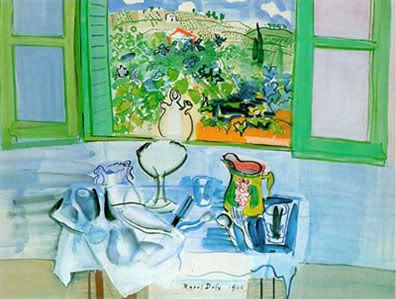 |
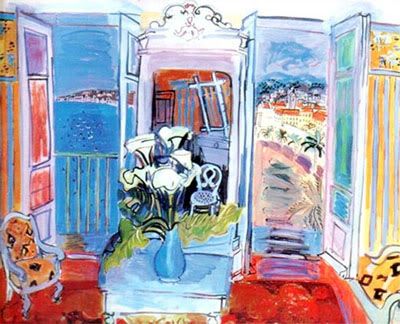 |
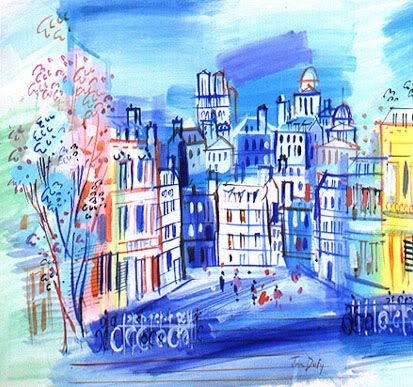 |
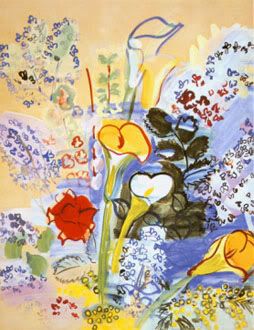 |
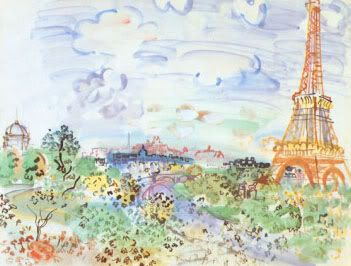 |
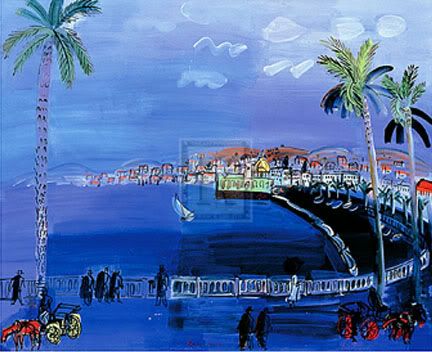 |
 |
Looks like a sketch study
for the above painting.
Christie's describes it
as a print "stamped with
the artist's atelier stamp
(lower left)" and drawn with
"ink and pencil on paper"
 |
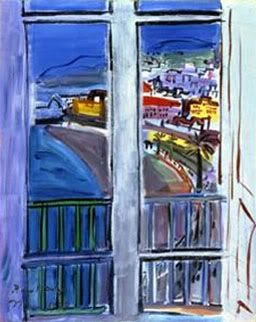 |
The Philadelphia Museum of Art describes Dufy's "Window on the Promenade des Anglais, Nice" [above] from its Modern and Contemporary Art collection:
In this work Dufy depicts the view from the closed window of his studio in the Hôtel Suisse, which looked out over the Promenade des Anglais, the celebrated shoreline road fringed with palm trees that hugs the curved Bay of Angels in downtown Nice. The work owes an equal debt to Henri Matisse's earlier hotel window paintings and to Piet Mondrian's severely geometric abstractions. The rectilinear windowpanes, placed parallel to the picture plane, serve as a framing device for the hillside city, which Dufy has rendered in saturated colors dominated by the vibrant blue sea and sky.----------------------------------------------------------------------------------------------------
Much of modern art is a rearrangement of reality, according to the visions and sentiments of the artists. The impressionists perhaps are at the cusp of bringing together what the artist saw and what the artist felt. Their art was still linked somewhat to reality, although the shimmering colors of Monet, and the psychedelic, moving lines of Van Gogh might have crossed the line to the other (their imaginary) side. Still, I think they were talented. Many went through rigorous training at various art institutions, and deconstructed, or reinvented, art through knowledge (and progress), rather than some malicious intent at destruction which is how our era is treating art.
Dufy works the thin like between impressionistic painting and line drawing. He cannot help splashing those glorious colors on the canvas, but he want to define them, and contain them, with his lines. No mad/unrestrained chroma explosion for him.
He of course deconstructs space too, but not as masterfully as Matisse, surely his mentor. His indoor spaces often seek the infinite freedom of the exterior by giving us a glimpse of this world through half open windows.
Perhaps the final quest of these artists is to attain some kind of glorious freedom, some utopic or paradisiacal world, right here on earth, and through their own creations. The restraints of civilization, of time and history, of culture, and even of etiquette were mildly scorned by them (and they seem mild compared to the advanced modernists.) But, they were still the draughtsmen of the demons which they unleashed into our world.
Still, beauty is beauty, and I think Dufy loved beauty.